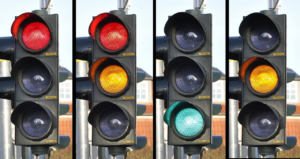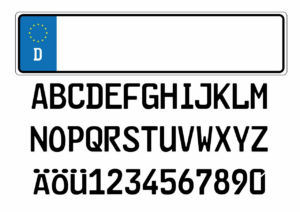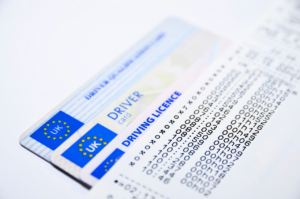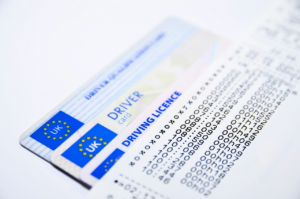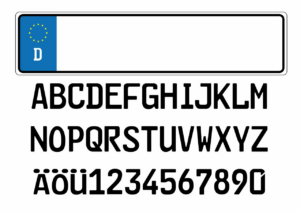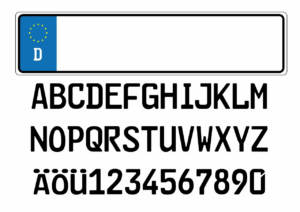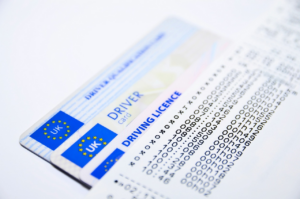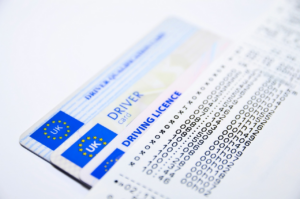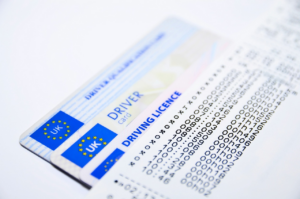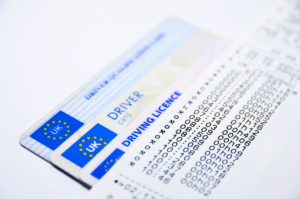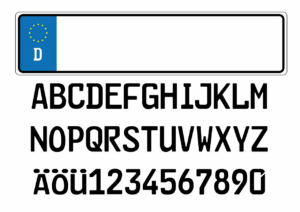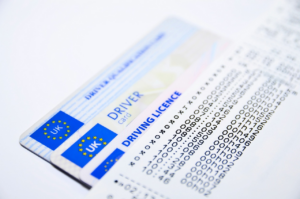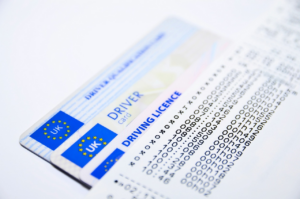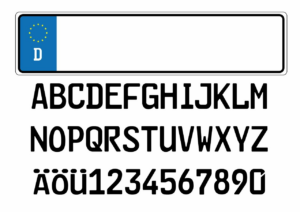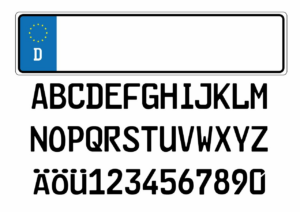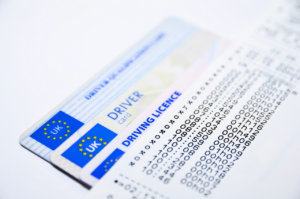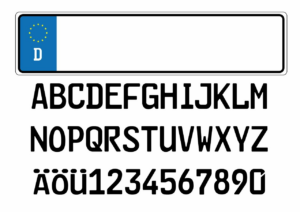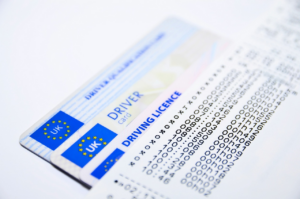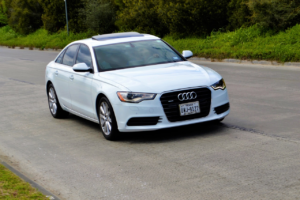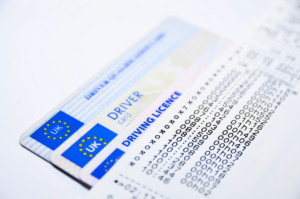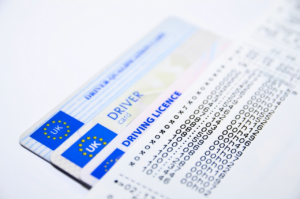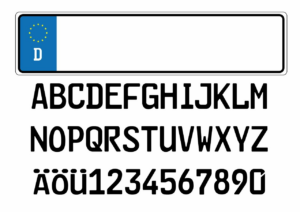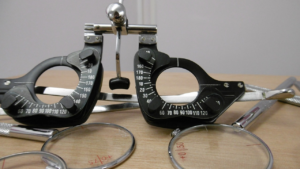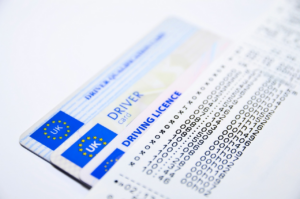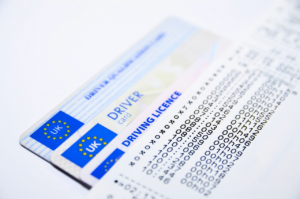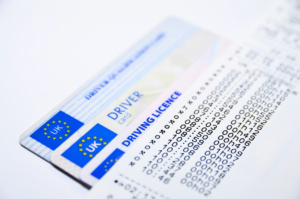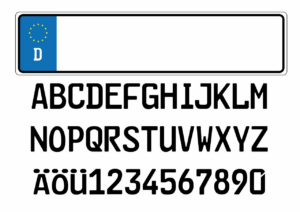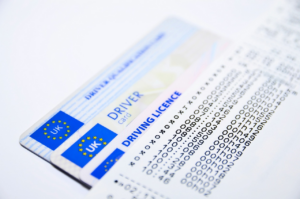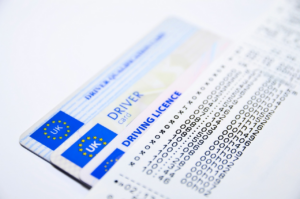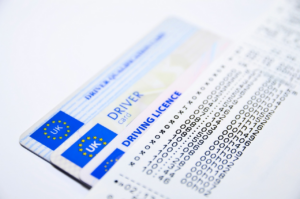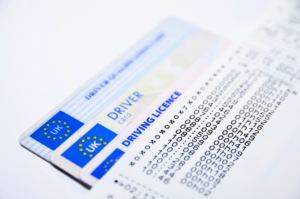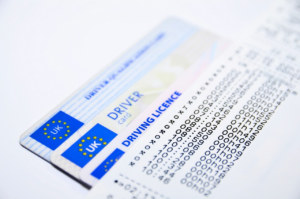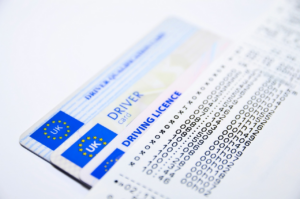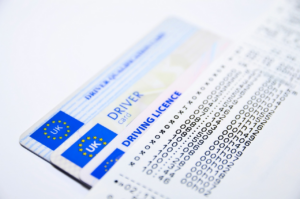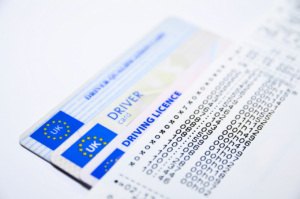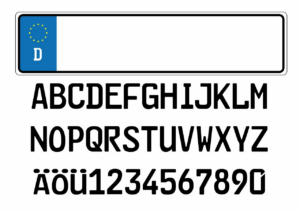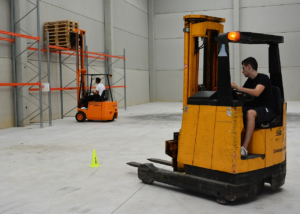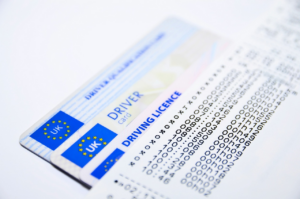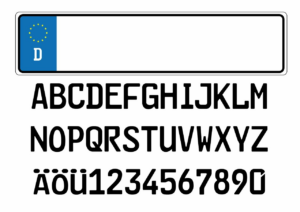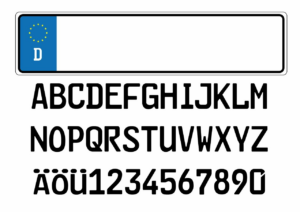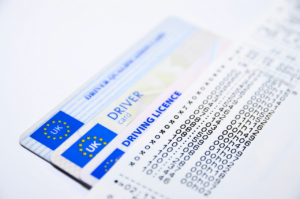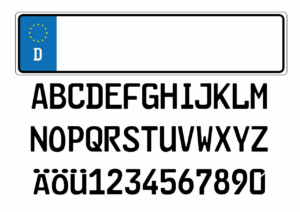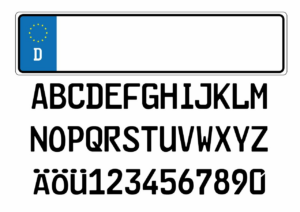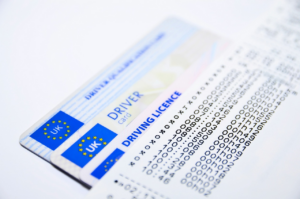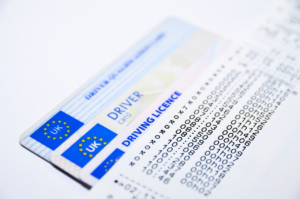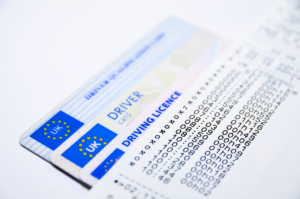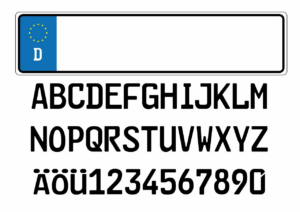Are you tired of being tailgated by aggressive drivers on the road? It can be a scary and stressful experience, but there are ways to handle it safely and effectively.
In this article, we will share eight expert tips and tricks for dealing with tailgaters, so you can stay calm, confident, and in control behind the wheel. Tailgating is a common problem on the road, and it can lead to dangerous situations if not handled properly.
By understanding the psychology of tailgating, keeping a safe distance, avoiding provoking tailgaters, using defensive driving techniques, communicating effectively, taking action when necessary, reporting reckless driving, and staying positive and confident, you can protect yourself and others from harm.
So, let’s get started and learn how to deal with tailgaters like a pro!
Understand the Psychology of Tailgating
Get inside the head of the driver behind you and learn why they might be riding your bumper with such intensity. Tailgating can be caused by various reasons, such as impatience, aggression, or simply ignorance of proper driving etiquette.
Some drivers may have a need for speed and feel that you’re driving too slow. Others may be experiencing road rage and are using tailgating as a way to intimidate you. There are also drivers who may not be aware of the dangers of tailgating and are simply following the flow of traffic.
Understanding the psychology of tailgating can help you respond appropriately. Instead of getting angry or retaliating, try to remain calm and focused on the road. Slow down and allow the driver to pass if it’s safe to do so. If you cannot let them pass, try to create more space between you and the car in front of you.
Remember, tailgating is a dangerous behavior that can lead to accidents and injuries. By being aware of the reasons behind it, you can take steps to protect yourself and others on the road.
Keep a Safe Distance
When it comes to driving, one of the most important things to keep in mind is maintaining a safe following distance. To do this, use the 3-second rule: keep a distance from the vehicle in front of you that allows you to count to three before reaching the same spot they passed.
And remember to increase your following distance in bad weather conditions, to give yourself enough time to react in case of sudden stops or skids.
By following these simple tips, you can help ensure your safety and the safety of those around you on the road.
Maintain a Safe Following Distance
To keep yourself and your passengers safe, it’s crucial to always maintain a safe following distance when driving on the road. This means leaving enough space between your car and the car in front of you so you have enough time to react and stop if necessary.
In general, it’s recommended to maintain a following distance of at least 3 seconds. To do this, pick a fixed object on the road, like a sign or a tree, and count how many seconds it takes for the car in front of you to pass it. If it takes less than 3 seconds, slow down and increase your distance.
Maintaining a safe following distance is especially important when dealing with tailgaters. If someone is driving too close behind you, resist the urge to speed up or brake suddenly. Instead, stay calm and maintain your speed while gradually increasing your distance from the car in front of you.
If necessary, pull over and let the tailgater pass. Remember, it’s better to arrive a few minutes late than to risk an accident. By maintaining a safe following distance, you can help ensure a safer and more stress-free driving experience.
Use the 3-Second Rule
By using the 3-second rule, you can significantly minimize the chances of getting into an accident caused by tailgating. This rule is easy to follow and requires you to maintain a distance of at least three seconds from the car in front of you.
To apply this rule, pick a landmark on the road, such as a sign or a tree, and start counting as soon as the vehicle ahead of you passes it. If you reach the same landmark before counting to three, it means you’re following too closely, and you need to increase the distance.
Using the 3-second rule is an effective way to avoid sudden stops or unexpected turns that can cause tailgaters to collide with other vehicles. It also gives you enough time to react to any obstacles on the road and take appropriate measures to avoid them.
By creating a sufficient space cushion, you can ensure that you have enough time to brake or steer clear of any potential hazards. Remember, the faster you drive, the more distance you should keep between you and the car in front of you. So, always adjust your following distance accordingly to maintain a safe and stress-free driving experience.
Increase Following Distance in Bad Weather
One way to enhance your driving safety in adverse weather conditions is by increasing your following distance. When roads are wet or slippery, it’s crucial to give yourself more space between you and the car in front of you, as it takes longer to come to a complete stop.
The recommended following distance is at least six seconds, which means you should be able to count to six before reaching the same spot as the vehicle in front of you. This extra space will give you more time to react to sudden stops or turns, preventing potential accidents.
It’s also important to adjust your speed accordingly when driving in bad weather. If you’re going too fast, you might not have enough time to react to unexpected obstacles on the road. Ensure that you’re driving at a safe and reasonable speed, taking into account the weather conditions, traffic, and road conditions.
Remember, it’s always better to arrive a few minutes late than to risk your safety or the safety of others on the road. By increasing your following distance and driving at a safe speed, you can reduce your risk of getting into an accident or being tailgated by other drivers.
Avoid Provoking Tailgaters
When you’re driving, it’s important to maintain a safe distance from the car in front of you to avoid any potentially dangerous situations, especially if someone is tailgating you. However, it’s equally important to avoid provoking the tailgater.
Here are three expert tips for dealing with tailgaters:
-
Avoid braking suddenly or slowing down unnecessarily. This will only aggravate the tailgater and make the situation more dangerous.
-
Stay focused on the road ahead and avoid making eye contact with the tailgater. This will prevent any potential road rage and keep you calm and alert.
-
If possible, move over to the right lane or pull over to let the tailgater pass. This will provide a safer driving environment for both you and the tailgater.
Remember, the key to dealing with tailgaters is to remain calm, focused, and in control of your own actions. By following these expert tips, you’ll be able to safely navigate any tailgating situation.
Use Defensive Driving Techniques
To stay safe on the road, always use defensive driving techniques that allow you to anticipate and react to potential hazards. When dealing with tailgaters, it’s especially important to maintain a safe following distance from the car in front of you. This will give you more time to react if the car in front of you suddenly brakes or swerves, and will also discourage tailgaters from getting too close to you.
Another important defensive driving technique is to always be aware of your surroundings. Keep an eye on the cars around you and be prepared to make quick decisions if necessary. Use your mirrors frequently and check your blind spots before changing lanes.
By being aware of your surroundings, you can avoid sudden movements that could provoke a tailgater and also react quickly to any potential hazards on the road.
Communicate Effectively
If you want to stay safe on the road and avoid any potential hazards, it’s crucial that you communicate effectively while driving.
One of the best ways to communicate with tailgaters is to use hand signals. These signals can be as simple as raising your hand in a “stop” motion to signal the tailgater to back off. Another effective signal is to use your hazard lights to indicate that you’re not comfortable with the current driving situation. Remember to use these signals sparingly and only when necessary.
Another communication technique is to use your mirrors to make eye contact with the tailgater. This can be a powerful tool as it shows that you’re aware of their presence and that you’re not intimidated.
If the tailgater still doesn’t back off, it’s important to stay calm and avoid any sudden movements. Simply continue driving at a safe and steady pace until you can safely change lanes or exit the highway.
By using effective communication techniques, you can avoid confrontations with tailgaters and stay safe on the road.
Take Action When Necessary
You need to take action when tailgaters put your safety at risk, and it’s important to stay calm and assertive in these situations.
One effective way to deal with tailgaters is to slow down gradually and let them pass you. This will give them the opportunity to move ahead and reduce the risk of a collision.
If the tailgater continues to follow you closely, you can also consider changing lanes or pulling over to let them pass.
Another option is to use your hazard lights to signal to the tailgater that you need them to back off. This can be especially useful if you are driving in heavy traffic or on a busy road.
If the tailgater still doesn’t get the message, you can also consider calling the police or reporting the incident to the authorities.
Remember, your safety is the most important thing, and it’s always better to take action than to risk an accident.
Report Reckless Driving
Report reckless driving to ensure the safety of yourself and others. It’s important to hold individuals accountable for their dangerous actions on the road. If you encounter a tailgater who’s driving recklessly, try to safely get their license plate number and any other identifying information.
You can then report their behavior to the appropriate authorities, such as local law enforcement or the Department of Motor Vehicles. Reporting reckless driving not only helps hold individuals accountable for their actions, but it can also prevent future accidents and save lives.
By reporting dangerous drivers, you’re doing your part to promote safe driving and protect yourself and others on the road. Remember, it’s always better to be proactive and report reckless driving than to let it go unchecked and risk a potentially devastating accident.
Stay Positive and Confident
Stay positive and confident while on the road, as it can make all the difference in ensuring a safe and enjoyable driving experience.
When you encounter tailgaters on the road, it’s easy to let frustration and anger take over. However, it’s important to remember that your reaction can either escalate or de-escalate the situation. Staying positive and confident can help you maintain control of the situation and prevent it from becoming dangerous.
One way to stay positive and confident is to focus on your own driving rather than the tailgater. Keep your eyes on the road and maintain a safe speed that you’re comfortable with. Avoid slamming on your brakes or making sudden movements, as this can agitate the tailgater even more.
Remember that you’re in control of your vehicle and you have the power to make safe and responsible choices on the road. By staying calm and collected, you can ensure a safe and enjoyable driving experience for yourself and those around you.
Frequently Asked Questions
What are some common reasons why people tailgate?
Do you ever find yourself wondering why someone is tailgating you on the road? There are a few common reasons why people engage in this behavior.
One reason could be that the person is in a hurry and feels that you’re driving too slow. Another reason could be that they’re simply not paying attention and are too close to your vehicle without realizing it. Some people may also tailgate as a way to intimidate or show aggression towards other drivers.
Whatever the reason may be, it’s important to remain calm and focused while on the road. Avoid slamming on your brakes or engaging in any aggressive behavior that could escalate the situation.
How can I determine a safe following distance while driving?
Determining a safe following distance while driving is crucial for avoiding accidents, especially with tailgaters.
The general rule of thumb is to maintain a distance of at least two seconds from the vehicle in front of you. To do this, choose a stationary object on the road ahead, such as a sign or a tree, and count the seconds it takes for your vehicle to reach that object after the vehicle in front of you passes it.
If it takes less than two seconds, you’re following too closely and should increase your distance. Remember to adjust your following distance based on weather and road conditions, as well as the speed of your vehicle.
By maintaining a safe following distance, you can avoid tailgaters and stay safe on the road.
What are some common behaviors that can provoke tailgaters?
When driving, there are certain behaviors that can provoke tailgaters. For example, driving too slowly in the left lane, braking unnecessarily, or constantly changing lanes can all irritate drivers behind you and cause them to tailgate.
It’s important to be aware of your own driving habits and make an effort to avoid these behaviors. Additionally, stay calm and avoid aggressive gestures or retaliating against the tailgater. Instead, try to safely change lanes or pull over to let them pass.
Remember, your safety is the top priority when dealing with tailgaters on the road.
Can you provide examples of defensive driving techniques?
To protect yourself from tailgaters, you need to practice defensive driving techniques.
This means that you should maintain a safe following distance from the vehicle in front of you, look ahead and anticipate any potential hazards, and avoid sudden lane changes or braking.
You should also use turn signals to communicate your intentions and avoid distractions such as texting or eating while driving.
If a tailgater is persistently following you, it’s best to pull over and let them pass.
Remember that you can’t control the behavior of others on the road, but you can control your own actions.
By being a defensive driver, you can reduce your risk of being involved in an accident caused by a tailgater.
What steps should I take if a tailgater becomes aggressive or dangerous?
If a tailgater becomes aggressive or dangerous, the first thing you should do is remain calm and avoid any sudden movements. Keep a safe distance from the car in front of you and avoid reacting to the tailgater’s behavior.
If possible, safely pull over to the side of the road and allow the tailgater to pass. If the tailgater does not pass and continues to act aggressively, consider calling the police and reporting the incident.
It’s important to prioritize your safety and the safety of others on the road. Remember, defensive driving techniques can help prevent dangerous situations, but it’s crucial to know how to respond if a tailgater becomes a threat.
Conclusion
So, there you have it, eight expert tips and tricks for dealing with tailgaters.
Remember, understanding the psychology of tailgating is key, so try to view things from the other driver’s perspective. Keep a safe distance and avoid provoking tailgaters by not breaking suddenly or slowing down unnecessarily.
Defensive driving techniques can also be helpful, as well as effective communication with the other driver.
If all else fails, don’t hesitate to take action and report reckless driving to the authorities. But above all, stay positive and confident behind the wheel, knowing that you have the knowledge and skills to handle any situation that may arise.
Safe travels!





